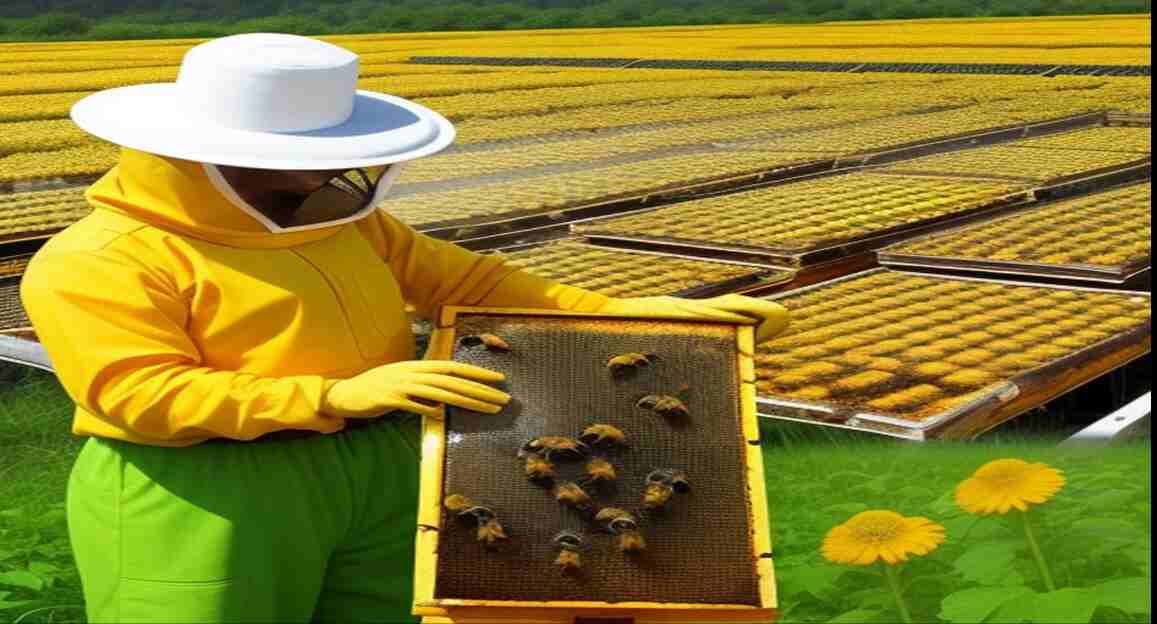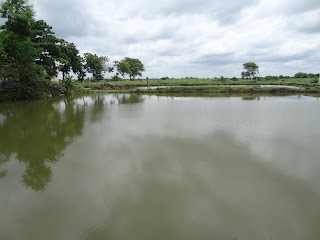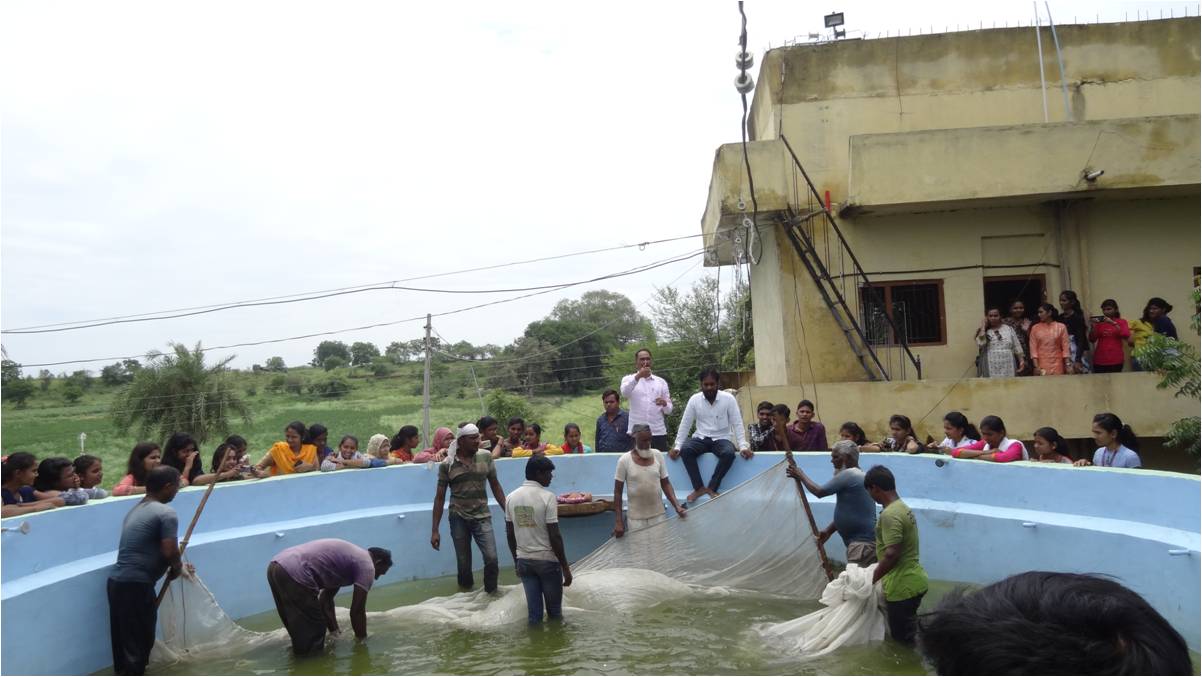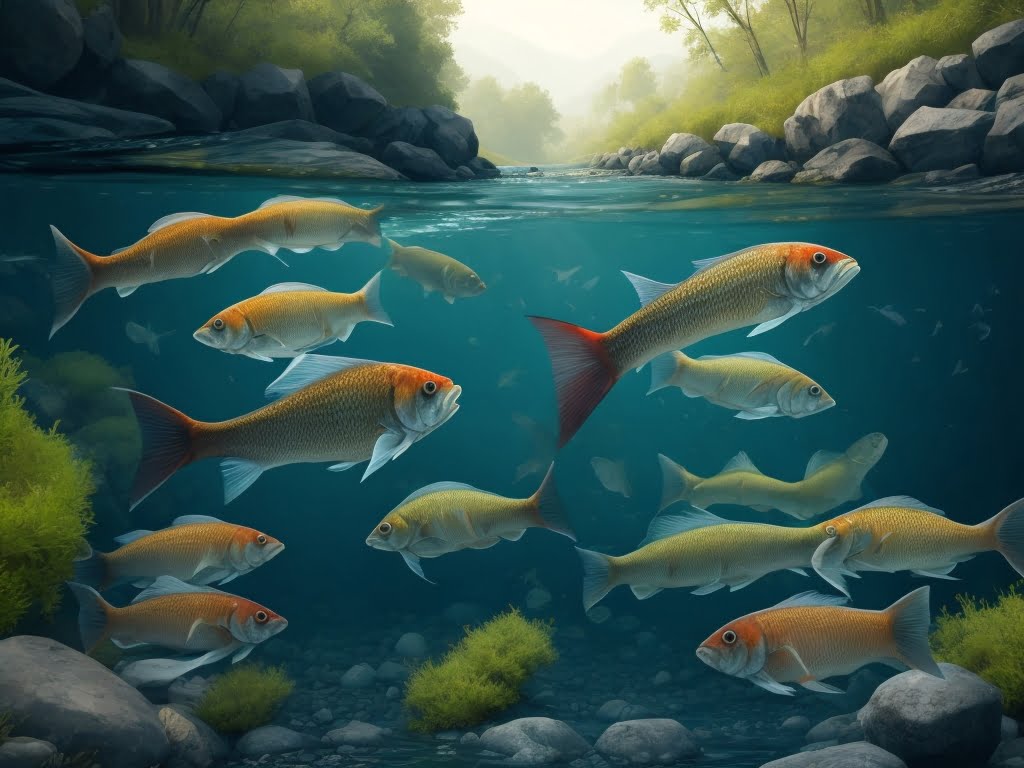Fishing Crafts and Gears: The use of crafts and gears in fishing technology plays very important role and help enhancing the production commercial bases. The success of fishing largely depends on to how and which types of nets are used to capture the fish.
There are three main types of devices used to capture fishes in both marine and inland fisheries:
- Crafts or Boats
- Nets or gear
- Hooks and lines
Fishing Crafts and Gears
There are various types of gears and crafts used in different parts depending upon the nature of water bodies, the age of fish and their species. Some nets are used without craft, however, others are used with the help of crafts. Generally, locally made gears and crafts may be non-mechanized or mechanized. ‘Fishing Crafts and Gears’
Crafts and Boats:
There are many types of fishing crafts being successfully made and used for marine and inland fisheries.
A. Marine Fishing Crafts:
Different crafts are used due to different conditions of sea on the east and west coasts.
I. Crafts used on the East Coasts:
(1) Catamaran:
The word catamaran is originated from a Tamil word Kattumaram which means ‘lashing timber’. It is used mainly on the east costs of Orissa from Kanyakumari. It is also used on northeast cost of Kerala. It is the most primitive, traditional, economical and efficient craft.
It is made by tying many wood logs in such a way that it takes the shape of a canoe, which consists of two main logs and two side logs cut into boat shape and held together with rope. The logs are held in position by loose rubber called Teppa. Generally the Catamaran is 5-10 metre long, 0.5 metre wide and 0.3 metre deep.
Types of Catamarans:
(i) Orissa and Ganjam type
(ii) Coromandal type
(iii) Andhra type
(iv) The boat-Catamaran
i. Orissa and Ganjam Type:
It is made by five logs pegged with wood. The logs are cut in boat shape and are not tied with rope.
ii. Coromandal Type:
It is used in Tamil Nadu to capture flying fish of Nagapattanam. It is made by 3-5 logs. A modified type of Coromandal type is called Kolamaram, which is made by 7 logs.
iii. Andhra Type:
It is the modified form of Orissa type, larger in size—about 5-7 metres long, hence made by nine heavy side wood logs that are fitted with a median logs. ‘Fishing Crafts and Gears’
iv. The Boat-Catamaran:
It is made of three wood logs tied in boat shape. It is used in Mandapam and Mukkun coastal regions.
(2) Masula Boat:
It is a weakly constructed boat of about 8-12 metres long (Fig. 32.1). It is used in clear weather near the shore. The masula boat is keel less and frameless made by mango planks, which are stitched with palm leaf fibres. There are several variations of the musula boat. In Orissa it is called ‘Bar boat’ and in Andhra called Padava or Padgam.
(3) Nauka and Dinghi:
These boats are with carvings and are operated in West Bengal and Orissa. These are well-designed large boats measuring about 11-13 m x 2-3 m x 2 m in size.
(4) Tuticorin Boats or Fishing Luggers:
These are operated in inshore waters and are used as cargo boats. They are carved boats of 11 m x 2m x 1m in size. ‘Fishing Crafts and Gears’
II. Crafts used on West Coasts:
(1) Dugout Canoes:
These are constructed from large wood logs. These logs are hollowed by scooping inner part. Their bottom is thicker than sides. They are operated on Kerala and Konkan coasts. The small boats of 5-10 m long are called ‘Thonies’, which are used for gill nets or drift fishing and for seining. The large boat of 10-22 m long is called Vanchi or Odam and is used for operating variety of nets on Malabar Coast. Dug-out canoes are also operated on the west coast from Colachal to Kathiawar. ‘Fishing Crafts and Gears’
(2) Plank-Built Canoes:
It is a kind of dug-out canoes. It is extended with planks on sides. They are popularly used on coast of Kerala, Karnataka and North Bombay. ‘Crafts and Gears-notes’
(3) Outrigger Canoes:
These are large size canoes of about 15 m long. It has narrow keel and single outrigger and extended out with planks. They are commonly called as Rampani, because they are used for the casting of the Rampani net for catching mackerels (Fig. 32.4). They are operated on the Kanara and Konkan coasts. Small size outriggers are used between Bhatkal and Majali.
(4) Built-Up boats:
It is highly specialized indigenous fishing craft. They are commonly used along the Bombay coast and north Ratnagiri. There are small variation according to different places such as:
(a) Ratnagiri type boat, which has pointed bow, straight and narrow keel and low gunwale.
(b) Machwa: It is provided with broad hull, straight keel and pointed bow. It is popular in Bassein hence called Bassien type. ‘Fishing Crafts and Gears’
(c) Satpati or Galbati Type: It has straight keel, high gunwale, medium pointed bow and broad beam. Satpati can be mechanized with a motor engine without any modification in design.
(d) Broach Type: It has flat bottom and is widely used in inshore and estuarine water. ‘Crafts and Gears-notes’
(5) Coracle:
It is used in rivers, reservoirs and canals for fishing. One or two fishermen can operate this craft. It is made like a round basin and its frame is made with split bamboos. The outer surface is covered with leather. ‘Fishing Crafts and Gears’
(6) Shoe Dhonie:
It is shaped like a shoe. It is used both marine and inland fishery. It is constructed by teak wood with planks grooved with ribs and frames fitted with nails. It is used for fishing with gill nets.
(7) Kakinada Nava:
It is commonly used for inshore fishing. It is made by teak wood. It is keel less but ribs are fitted in frame with nails. It is about 9-10 m in length. ‘Fishing Crafts and Gears’
Marine Fishing Gears
Various types of gears are used for fishing in sea. They may be of different size, shape and designs. These gears may be made by fishermen. They are also manufactured in cottage industries. The most commonly and widely used fishing gear are different types of nets.
They are used for catching large fishes offshore. The main type of nets being used are boat seine, shore seine, bag nets, fixed or stationary nets, drag nets, drift nets and cast nets.
(i) Seines:
These are specially designed and large fishing nets. They are generally used in running water. When they are spread in sea; they collect large numbers of fishes. Seines are rectangular in shape mounted on wire. They are spread vertically in the water. Seines are of two types, boat and shore seines. ‘Fishing Crafts and Gears’
(a) Boat Seine:
These nets are conical in shape provided with wings. The mesh of the nets is smaller in center and increase in size towards outer ends of flanks. This seine is operated in sea by catamarans or boats. The seine traps the fishes. Towing is done with the help of coir.
(b) Shore Seine:
It is operated from seashore. It is popularly called as Ber Jal (Fig. 32.5) in Orissa, Pedda or Alivi vala in Andhra coast, Periya vala or Mada valai in coromandel coast and Kara valai in the Gulf of Mannar. It is a conical bag-like with two wings. ‘Fishing Crafts and Gears’
One end of net is kept fixed to shore and other end is spread into sea with the help of a boat, in the form of semicircular fashion. When the net is filled up with fishes, the two ends are slowly dragged by group of fisherman. ‘Fishing Crafts and Gears’
(iI) Danish Seine:
It is also called drag seine. It is used in deep waters and do not reach to surface. It has small wings.
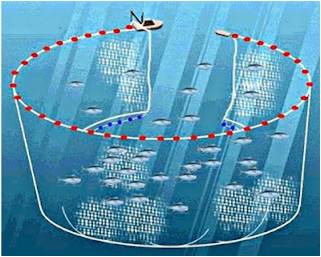
(iII) Beach Seine:
It is also called haul seine. It has two wings made by strong twines (Fig. 32.6). Both wings are joined to a central bag. The ends of wings are tapering and connected to the wraps either directly or by means of spreader (brail) of strong pole. The mesh size is smaller in the bag than in the wing. Beach seine has side, i.e., float line and lead line. The float line contains appropriate floats whereas lead lines carry sinkers. ‘Fishing Crafts and Gears’
The net is used in such a way that its one wing remains on the beach. The other wing is spread on right angle in such a way that, when it is dragged slowly it encircles that part of water section. Both float and lead line do not allow fish to escape. ‘Crafts and Gears-notes’
(iV) Purse Seine:
It is used to catch pelagic and migratory fishes. It is purse-like (Fig. 32.7). It has two main lines—float line, which remains on the surface and a lead line, which sinks into the water, but does not touch the bottom. The fishes are trapped and do not escape because net is pursed during the operation. ‘Fishing Crafts and Gears’
At the time of use, one end of the net is tucked with a boat and another end is laid down with the help of a cruise making a circle and bringing this end back to the boat. The net then takes the shape of purse.
(v) Trap Nets:
They are generally used for fishing in shallow waters. Trap nets are strong and made in various shapes and sizes. These nets may be stationary or fixed. Its lower part is cylindrical while upper part is conical. Interior region of the net contains one or two cone-shaped necks to prevent escape of fish. Large trap nets are called a pound net, which has a chamber with a wide gate. ‘Fishing Crafts and Gears’

(vI) Drop Net:
It is square in shape and mounted with to supple loops at the corners that tied in a cross at the top and is attached to a pole. Drop net is operated with a boat. It is dropped and pulled to catch fishes. ‘Fishing Crafts and Gears’
(vII) Cast Net:
It is a circular and cone shaped net. It is spread from the edges of water. Its circumference is attached to lead line while its centre is attached with a rope. The net assumes shape of umbrella when it is spread on the water. When the net sinks to the bottom it is pulled and fishes are collected. ‘Fishing Crafts and Gears’

(vIII) Drift Nets and Gill Nets:
These types of nets are. made by nylon materials (Fig. 32.8). Gill nets are kept overnight in the water and then dragged. The fishes get entangled in the meshes. There are two types of nets—simple and trammel nets. ‘Fishing Crafts and Gears’
(iX) Simple Gill Net:
These are loosely woven nets. When spread in water, fishes get entangled in mesh. If the fishes try to escape the twine of the net get mingled in the gills of fishes. The fish is said to be gilled (captured by gills) and hence the name given ‘Gill Net’.

(x) Trammel Gill Net:
It has a float line at the top and a dead line at the bottom; two walls are attached to these lines. It is generally operated to catch small fishes. ‘Crafts and Gears-notes’
(xI) Fixed or Stationary Net:
These nets are used to catch fish at inshore water during low tides. These nets are kept fixed with the help of floats, sinkers and stakes. It is rectangular or conical in shape. They are available in various sizes.
In West Bengal and Orissa conical fixed nets are used, which are called Ghurni Jal, or behundi, Kathia-kool Jal, Panch-Kathiaber Jal and Panch. However, rectangle nets used are called as Mai Jal in West Bengal, Barnada Jal in Orissa and Kakavalai, Jadi or Mtagh Jal in Tanjore. ‘Fishing Crafts and Gears’
(xII) Bag nets:
It is conical in shape without wings (Fig. 32.9a, b). Some commonly used bag nets are iroga in Andhra, thuriwala in Tamil Nadu and koliwala in Kerela. These nets are used with the help of two catamarans or boats. In the coasts of Mumbai and Gujarat a special type of bag net called ‘dol’ is used. It is conical with wide mouth. The mouth is fixed on a bamboo.
(xIII) Scoop Net or Dip Net:
It is round in shape and is used to capture delicate fishes. It is like a finger bowl and can be moved swiftly in a scooping manner, collecting the fish. ‘Fishing Crafts and Gears’

(xIV) Trawls:
These are large dragging type nets. There may be two types of trawls with beam called beam trawls and otter trawls. ‘Crafts and Gears-notes’
B. Inland Fishing Crafts and Gears:
Inland Fishing Crafts:
Rafts and Dongas are age-old inland fishing crafts used in steady waters.
Rafts:
Rafts are traditional crafts made by different types of materials. In Bihar earthen pots are tied together to provide support to a high bamboo platform. In West Bengal and Tamil Nadu stems of banana trees are held together to construct a floating platform.
In olden days buffalo skins are tied together to make a crude raft. In West Bengal a simple types of dugout canoe called Dongas are used. It is constructed by hollowing the stem of palm tree. It is commonly used for fishing in shallow waters. Vellum is stronger dugout canoe used in brackish waters of Kerala. In Tanjore and Tiruchirapalli chatty rafts made by earthenware are commonly used. ‘Fishing Crafts and Gears’
Boats:
Following types of boats are used for fishing in rivers:
i. Plank-Built Boat:
These boats are sturdy and are used for fishing in rivers with strong tides and currents. In different regions different types of plank boats are operated. One of common types is ‘Dinghis’ used in west Bengal. Dinghi is narrow and it has a tapering bow and stern. It has no Keel. Dinghi is generally used to operate purse nets and dip nets. Another type is Chandi nauka, which is used to operate drift nets. It is 18 m long and 3 m wide.
In Calcutta (Kolkata) and the other parts of West Bengal a medium sized boat called Mechho bachari is used to transport live fishes. However, in Chilka lake (brackish water lagoon) another type of plank boat called Nava is used. ‘Fishing Crafts and Gears’
ii. Kulnawa:
It is a specialized boat used in the river Ganges for fishing of minnows. Kulnawa means open wale boat. This boat is used in calm water during night from February to April. It is brought from Tarai parts of Nepal.
Kulnawa is made up of 3 parts, viz., a frilled pole, screen platform and boat with one of the walls open. It is made by Sal wood or Kathal wood. It is 7 m long and is dinghy type of boat without any keel. The boat is painted by coaltar to keep it dark in colour. ‘Crafts and Gears-notes’
The screen platform is made by 5 m x 0.5 m bamboo splinters, which are woven interlacing plastic cords. Screen is painted with enamel paint. The free margin of screen is always immersed in water. The frilled pole is 4-6 m long bamboo pole kept drooping as frill. 6% dry grass bunches are tied to these poles. ‘Fishing Crafts and Gears’
Inland Fishing Gears:
India has a wide variety of diversified water bodies, hence the nets used are also diversified.
Nets used in hill streams:
Cast nets are used in small pockets of hilly regions. Different types of traps and cast nets are fixed in narrow gaps of streams. It catches fish during breeding seasons.
Nets used in Ponds and Lakes:
These are most commonly used for commercial fishing. Seines are large nets operated from boats. In big lakes and the Ganges the most commonly used seine is Jagat Ber Mahajal. Simple drag nets are also employed in ponds for commercial fishing. ‘Fishing Crafts and Gears’
Rangoon Nets and Uduvalai:
They are used in those lakes where use of seines and dragnets are not easy. Rangoon net is made by fine cotton rectangular pieces of net. These pieces are tied in such a way so as to form a big wall. It is then spread in water with the help of floats.
The fish gets entangled in the net. Rangoon net is generally used for fishing in less deep water. However, in deep water bodies the use of uduvalai is preferred. It has small sinkers with footrope. ‘Fishing Crafts and Gears’
Gears used in rivers:
The following gears/ nets of different dimensions are used for fishing in rivers.
Seine and Drag Nets:
They are most commonly used nets for fishing in rivers. Seines can be operated from one or more boats. ‘Fishing Crafts and Gears’
Kuriar Nets:
It is used in shallow water for fishing of carps and herring (Hilsa ilisha). This net is very easy to operate. Kurian net is umbrella like and kept in inverted position and dipped in water for some times. Then it is pulled out with capture.
Kona Jal or Bhasa Gulli:
It is a special type of large cotton seine net used for fishing of Hilsa. ‘Crafts and Gears-notes’
Kona Jal:
It is a special type of seine net of about 90 m x 9 m in size. It has conical pockets of small mesh size. These pockets are fixed at a distance of 8-10 m all along the net. It is made by cotton, fish once caught, cannot escape because of a valve-like flap present in the pocket. It is also called Bhasa Gulli.
Moi or Moia Jal:
It is a simple net commonly used in shallow waters for fishing.
Jagat Ber or Maha Jal:
It is a simple net used all around in rivers.
Chunti Jal:
It is a type of drag net used in rivers of Bihar. Two fishermen operate it.
Kharra Jal:
Hela jal, bhesal jal and firki jal are also commonly used for fishing of carps and Catla in the river Narmada.
Khorsula Jal or Koila Jal:
It is a special type of dip net. Bhil tribal fishermen use this net in Narmada river for fishing of migratory Hilsa.
Jhanda Net:
It is like an open bag operated in shallow waters. It is rectangular in shape with small mesh. This net is stretched on a bamboo frame.
Suti Jal:
It is a long-tube like stationary bag net. It has a long wing.
Bada Jal:
It is a modified type of Suti jal, which has a wide opening, being kept open with the help of a rod.
Purse Net:
Special types of purse nets used for fishing in rivers are kharki jal and shanglo jal or sharki jal. In shanglo jal the mouth of purse can be opened or closed with a vertical cord. However, in kharki jal a vertical bamboo rod is fixed to the lower part of mouth of the purse to open or close it. These nets are operated from a dug-out canoe.
Hooks and Lines:
Fishing hooks and lines are the most basic and fundamental tools used in fishing. They have been employed for centuries and remain a popular choice for both recreational and commercial anglers.
Fishing Hooks: Made of metal, typically high-carbon steel for strength and sharpness. Come in various sizes, shapes, and designs to suit different fish species and fishing techniques. The most common types include circle hooks, J-hooks, octopus hooks, and treble hooks. The size and type of hook chosen depend on the targeted fish, bait used, and fishing method.

Fishing lines: Made from various materials, including monofilament (nylon), fluorocarbon, and braided lines. Each material has its own advantages and disadvantages in terms of strength, visibility, and stretch. The line weight or thickness is chosen based on the size and strength of the fish being targeted.

The fishing line is attached to the rod and reel, and the hook is tied to the end of the line. Bait is then attached to the hook to attract fish. When a fish bites the bait, it gets caught on the hook’s barb, and the angler reels in the line to land the fish.
Different types of hooks and lines are used for various fishing techniques:
- Bait fishing: Typically uses J-hooks or circle hooks with live bait or lures.
- Fly fishing: Uses lightweight flies and thin lines for casting and delicate presentations.
- Trolling: Employs sturdier lines and hooks to pull lures or baits behind a moving boat.
- Jigging: Uses weighted jigs or lures that are repeatedly raised and lowered to attract fish.
Choosing the right hooks and lines is crucial for successful fishing. Consider the type of fish you are targeting, the fishing conditions, and your personal preferences when selecting your gear.
Maintenance of Gears:
Proper care and handling of fishing gears after their use is as important as their use. Proper maintenance increases the durability of the gears. Following care is necessary:
1. The gear should be washed thoroughly with the clean water and weeds and mud, etc. should be removed carefully.
2. Then dip the net in dilute KMnO4 or CuSO4 or common salt solution to get rid of harmful bacteria.
3. Wash again with clean water and then spread in shade for drying.
4. To increase durability and strength of the fibre of gear, it may be kept immersed for 10-15 min in hot tar diluted with kerosene.

